High-yielding potato variety "White Swan" with large tubers
White swan is a potato variety with large and light tubers. It is considered one of the most productive on the market. Contains a record share of tuberin, the most valuable vegetable protein, and vitamin C. Tubers boil well, although they darken slightly when cooked from high temperatures.
In our article - all the details about the variety, features of agricultural technology, photos and reviews of summer residents about the White Swan.
The content of the article
Description of the variety
This potato variety appeared relatively recently and has not yet been included in the State Register breeding achievements. The white swan is actively cultivated in Russia, Belarus and Ukraine.
Summer residents appreciate the variety for the large weight of tubers and high yield. - up to 10 kg from one bush. It is not grown on an industrial scale on the territory of the Russian Federation.
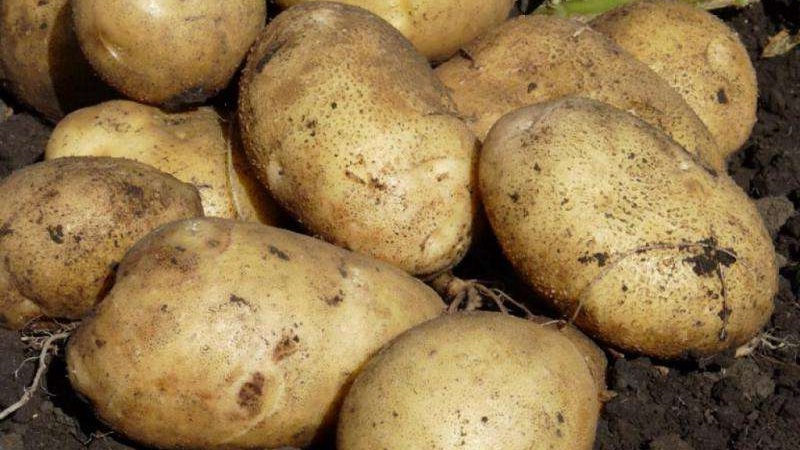
The White Swan is characterized by:
- light large tubers with a pinkish tinge of regular oval shape weighing from 200-500 g;
- thin rind that peels off easily;
- high starch content;
- semi-spreading bushes of medium height;
- white color of the pulp.
Mostly the White Swan is raised by private farmers and hobbyists. Ripens by September, if you follow the watering regime and first take care of the processing of tubers for planting.
Chemical composition, trace elements and vitamins
100 g of vegetable contains:
- 11.4% carbohydrates;
- 2.84% water;
- 2.13% protein.
Most of this grade contains ascorbic acid, tuberin, B1, B2, B5, B6, potassium, calcium, silicon, magnesium and other trace elements. Potatoes traditionally contain a lot of starch (up to 36.8%), fiber, pectin substances.
Of the mineral salts in tubers, potassium and phosphorus salts prevail, and from organic acids - citric, oxalic, malic. Diet dishes like mashed potatoes or friable boiled tubers are excellent from the White Swan.
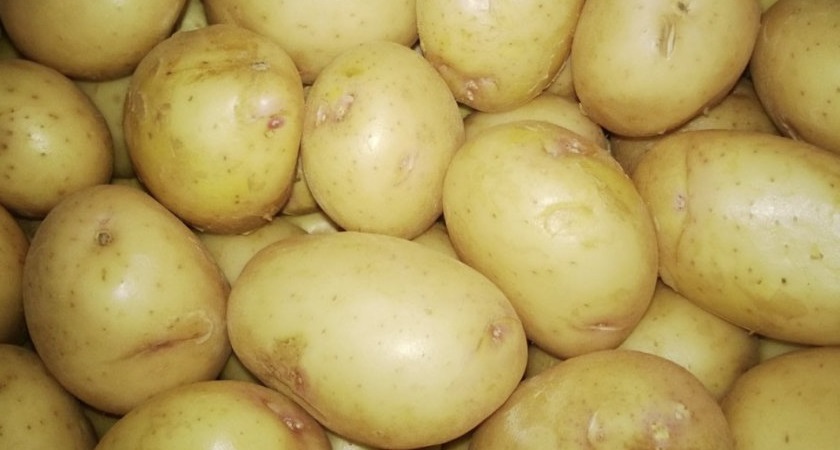
Ripening period, exactingness to the climate and resistance to diseases
White swan is considered an early ripening potato - 70-90 days... Already at the beginning of autumn, it is dug out of the ground and eaten.
The variety is picky about the soil, but with pre-planting treatment of tubers demonstrates disease resistance. Rarely susceptible to potato cancer and nematodes, but susceptible to late blight pathogen.
Potatoes grow on light sandy soils with neutral to slightly acidic pH... If the acidity values are outside the pH range of 5.5-7.0, then it is better not to plant. The variety is suitable for cultivation in the Central Black Earth, North Caucasus, Middle Volga and other regions of Russia.
It is interesting:
Early maturing potato variety "Nandina" with good keeping quality
The main advantages and disadvantages of the variety
Among the virtues of the White Swan:
- excellent presentation - white color and smooth surface, which gave the name to the culture;
- early maturity;
- high productivity.
There are also disadvantages:
- potatoes have a neutral taste that not everyone will like;
- medium friable, darkens during cooking;
- not stored for long.
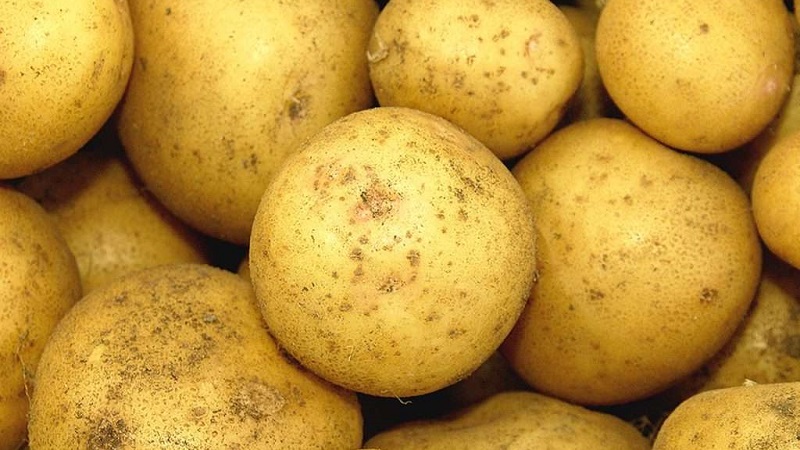
Difference from other varieties
White swan ripens faster than other varieties and is considered not particularly demanding on the quality of the soil. Potatoes also differ in weight: if other varieties have tubers of 100-130 g each, then the White Swan is much larger - up to 500 g.
Features of planting and growing
Plant potatoes when the ground warms up to + 6 ... + 9 ° С... Planting is carried out at a depth of 10-15 cm, the distance between the beds is 55-60 cm. On the day of planting, the tubers are cut lengthwise into three parts with eyes. Each fraction is planted separately. Landing site is renewed every 2-3 years.
Preparing for landing
A month before planting, the tubers are laid out for half a day in the sun.... This will enhance their growth. During germination, the optimum air temperature is not less than + 8 ... 12 ° С.
Tubers are treated before planting with growth stimulants and insect-fungicidal agents... Sometimes a solution of copper sulfate is also used. Treatment with nitrogen-phosphorus fertilizers will ensure the ripening of the crop a week earlier and 7-10% more than planned.
Ground requirements
It is best to plant potatoes in black soil, flavored with manure, wood ash and superphosphate or in sandy, loamy soil. Do not plant crops in shady areas. This will lead to the appearance of small tubers. The soil should be moderately moist. Peatlands are not suitable for sowing.
Growing features
For a bountiful harvest, it is advisable to harrow the soil and destroy weeds.... Seed tubers are planted at a temperature of at least + 8 ... + 10 ° C.
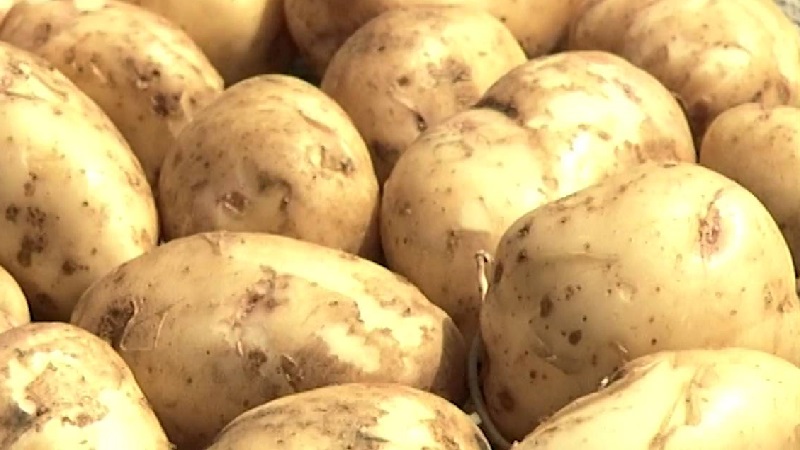
Hilling is carried out after the appearance of 10-centimeter seedlings. This procedure is performed at least three times during the entire growing season. The earth is loosened after every heavy rain.
Potato growth is stimulated:
- slurry, pet urine, stale bird droppings;
- regular watering;
- ammonium sulfate, ammonium nitrate, superphosphate in the form of top dressing;
- loosening and hilling of the soil.
Attention! Not earlier than a week before harvest, the tops are mowed, leaving a minimum for a guideline so that all nutrients go to the growth of tubers, and the peel is denser.
The nuances of care
Potatoes do not require constant maintenance... It is necessary to occasionally weed, huddle and feed the soil, and also ensure a normal level of moisture.
A month after planting, the tubers are fed urea, superphosphate, ammonium sulfate. The procedure is repeated when buds appear and after flowering.
Council. During flowering, the potatoes will not be damaged by good mulching with humus or rotted sawdust. This will protect the land from severe summer overheating.
Watering mode
Potatoes need periodic mechanical or manual watering: 2-3 times a week at the stage of budding and flowering. They begin when the shoots have reached 10 cm. Before the appearance of buds and flowers, they are rarely watered - once every 7-10 days, but with a large amount of warm water so that the earth is well saturated with moisture. This is done early in the morning or in the evening.
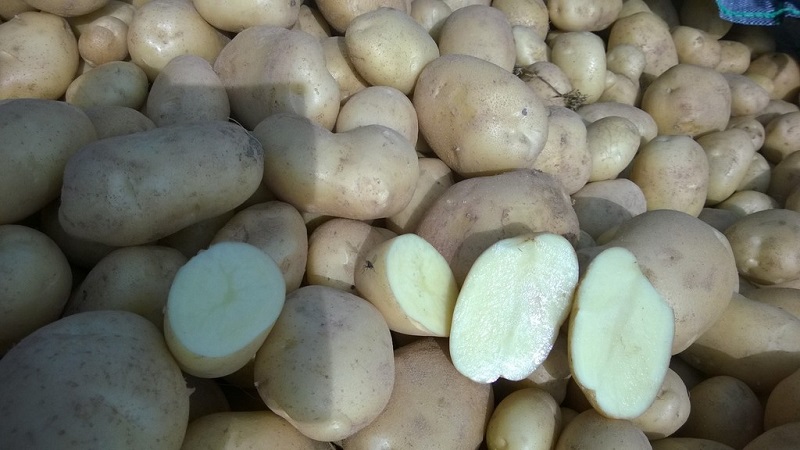
Top dressing
Potatoes are fed in a variety of ways. Dissolve in 10 liters of water:
- 1 tbsp. l. urea, 0.5 l of mushy mullein or 1 tbsp. l. bird droppings;
- 1 tbsp. l. potassium sulfate, 2-3 tbsp. l. wood ash;
- 2 tbsp. l. superphosphate and 1 tbsp. porridge-like mullein (or chicken droppings).
Foliar dressing is carried out 2 times a month... A month before harvesting, the crops are sprayed with superphosphate infusion, which promotes the ripening of potatoes.
Weeding and hilling
Regular weeding and hilling protects seedlings from weeds and accelerates ripening tubers. Loosening the soil prevents moisture loss, provides air access to crops. Hilling is also directed against the Colorado potato beetle: the eggs of the insect laid under the soil layer die during digging. An optimal air regime is created for the formation of a powerful root system and the growth of large tubers.
Read also:
Disease and pest control
The main problem of potato beds is pests: Colorado potato beetle, moth, caterpillars, wireworm, etc. Insects are collected by hand or treated crops with chemicals ("Prestige", "Taboo", etc.).
Disease transmission through insects is also possible or contact with other plants. They fight viruses by destroying diseased bushes together with tubers and treating them with antifungal drugs based on living microorganisms and their metabolic products.

Harvesting and storage
Harvested in August - September... The yellowing of the tops indicates the ripening of the tubers. To check if the potatoes are ripe, dig out one bush from the garden. After harvesting, harvest any remaining leaves and weeds.
How and when to collect
Harvesting times vary from region to region, but the average ripening time of tubers is 70-80 days after sowing. The bushes are dug in from the side and pulled out for the remains of the tops. The tubers are then collected and placed in a bucket or cart.
Storage features and keeping quality of the variety
After harvesting, the potatoes are sorted, to avoid ending up in the rotten vegetable store. For better storage, the crop is treated with copper sulfate.
So that the tubers lie for a long time:
- they are placed in a dry, cool, dark place;
- observe the temperature regime + 2 ... 4 ° C;
- provide air access to the room.
For tubers to last longer, they must be fully ripe with no green bloom or damage.
For your information. Potatoes spoil less if they are stored in a box along with plant leaves (for example, fern, mountain ash, elderberry).
The white swan does not belong to the shelf potato varieties.... Like all early varieties, it is stored only until winter. Tubers with a hard skin and no signs of rotting are best stored.
The seed material of this potato variety is not certified... With heavy rains, tubers begin to sprout even in the ground, which affects keeping quality.
What can be the difficulties in growing
White swan falls prey to insect attacks or viral infections... To prevent this from happening, carefully look after the beds and prevent diseases and other signs of spoilage in time.
If the potatoes become infected with the virus, the tops will dry out and fall off ahead of time, and the tubers will begin to rot. When attacked by pests, the vegetable will become unfit for human consumption.
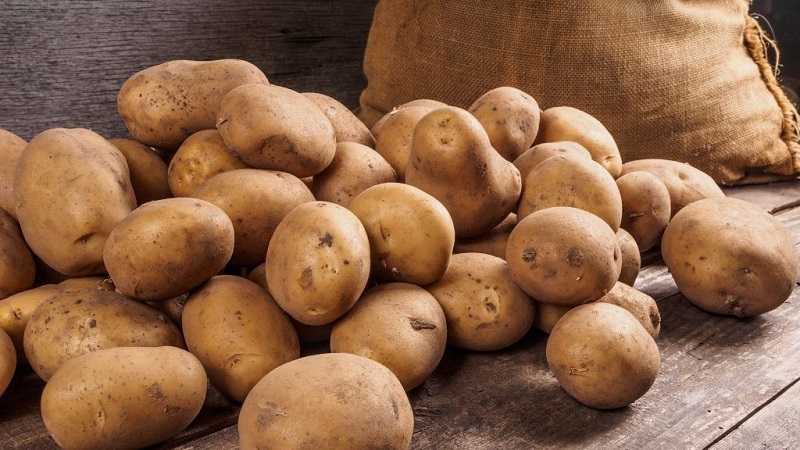
Tips from experienced gardeners and reviews about the White Swan variety
Experienced gardeners advise:
- Regularly treat the bushes with fungicidal preparations. This will avoid fungal infection and darkening of the tubers inside. These potatoes are unsuitable for storage and sale.
- Do not get carried away with nitrogen fertilizers. This will increase the wateriness of the potatoes.
- Do not store the harvested crop together with other vegetables and fruits. This increases the risk of contamination and product spoilage. The neighborhood of potatoes only with beets is permissible.
- A couple of apples in boxes of potatoes will help prevent sprouting.
Reviews about the White Swan are not always positive... The reason for the low taste is the wateriness, tastelessness of the tubers. Many people do not like the fact that potatoes darken during cooking. However, this variety is considered one of the best for sale, as it is large, beautiful in appearance and grows quickly.
Vladimir Gordienko, Krasnodar: “Last year they planted it for the first time. We are quite satisfied, as we got two large buckets from one bush. But many tubers were sprouted. This, of course, is a minus - you cannot put such in the basement, you need to eat it right away. The rest are satisfied. The potatoes are clean, smooth, and have a pleasant color ".
Svetlana Kirova, Saratov: “I have been planting the white swan for the third year already. Unpretentious variety. I'm happy with everything. Buyers quickly disassemble such a beautiful and clean potato, since it does not actually need to be peeled. You can cook and eat like that ".
Pavel Toptunov, Bakhchisarai: “Excellent variety - I recommend it to everyone. When digging out, dirt does not stick to it, which means that there is no need to clean it of clods of earth. The swan grows quickly and gives such a yield that no other varieties have yet given us. ".
Conclusion
White swan is a productive early maturing potato variety. If you follow all the rules, then in a short time you will grow a wonderful crop from light and large tubers. But the taste characteristics of the product are far from ideal. In addition, these potatoes are not stored for long and require frequent watering during the budding and flowering period.
Another drawback: this variety is not yet produced on an industrial scale in Russia and Belarus. It is little known and is grown only by amateur gardeners and small farms.